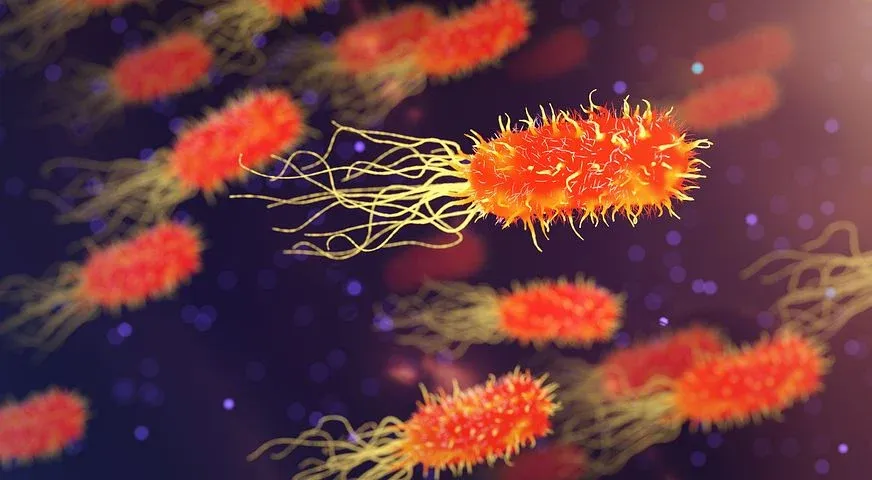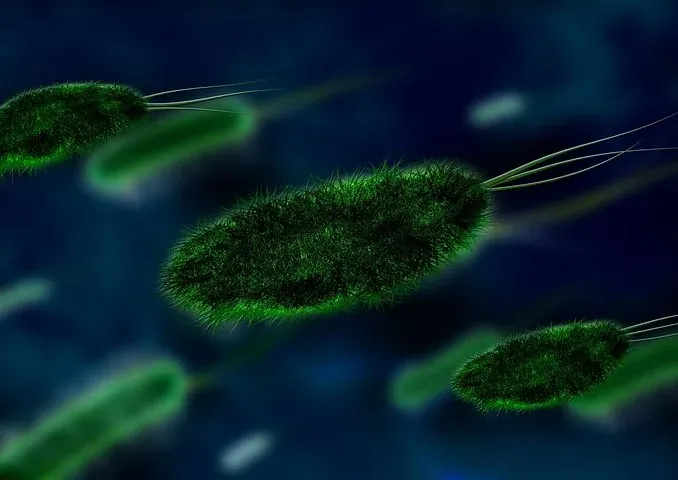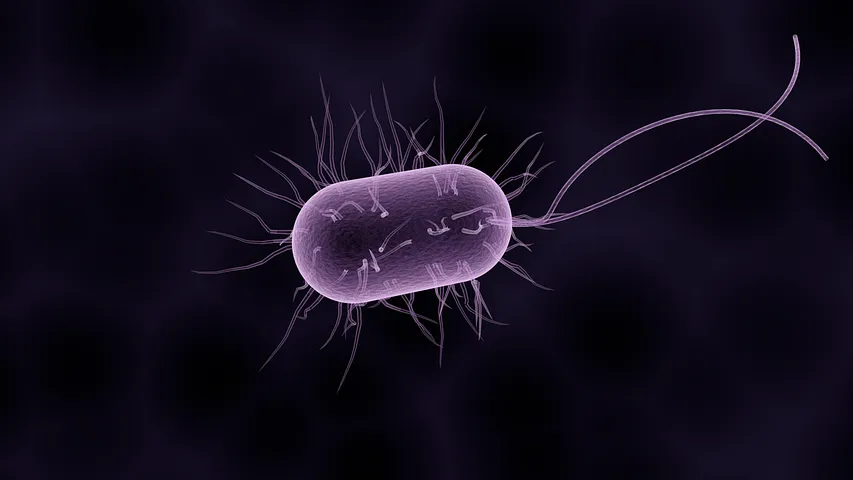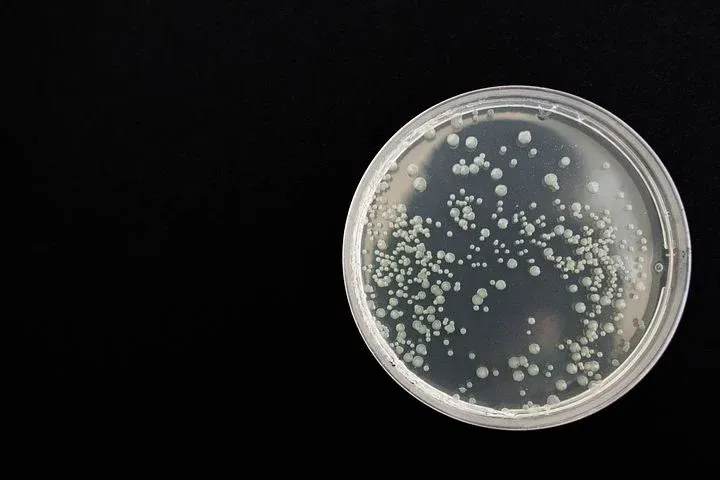Hello everyone hope you are having fun. Today we are going to consider "BACTERIA" I know a lot people do scared whenever this particular subject is mention. People think it is the most dangerous and baddest orgasm. That is not true.
 [source] (
[source] (
https://pixabay.com/photos/bacteria-medical-biology-health-3658992/)
Bacteria are natural floral in the body. There are just there.
Bacteria play an important role in our system. Bacteria are single celled microbes. The cell structure is simpler than that of other organisms as there is no nucleus or membrane bound organelles. Instead their control centre containing the genetic information is contained in a single loop of DNA. Some bacteria have an extra circle of genetic material called a plasmid. The plasmid often contains genes that give the bacterium some advantage over other bacteria. For example it may contain a gene that makes the bacterium resistant to a certain antibiotic.
 [source] (
[source] (
https://pixabay.com/illustrations/bacteria-virus-organism-pathogen-106583/)
Immediately microorganisms are mentioned anywhere, the impression is that they are all very bad. People immediately think of the infectious diseases, the spoilage they cause to foods, crops and the death they cause. Microorganisms have become foes for us to annihilate and repel. We know that this view is wrong and we shouldn't see microbes in such prospective. Even the microbes themselves are telling us, 'we are not bad'
 [source] (
[source] (
https://pixabay.com/illustrations/bacteria-bacterium-microbiology-1832824/)
These microbes are everywhere in our bodies (both external and internal organs), our environment, industry and even food and their functions are eminent to human existence. Without them and their products or activities, many lives will be lost to wasting diseases, food insecurity challenge will persist and our dear environment which is a borrowed asset for the generations to come will not be preserved.
Microorganisms also referred to as microbes are small living things that can be seen very well under a microscope, and include bacteria, protozoa, yeasts, molds and algae. But today we shall consider Bacteria. Microbes are ubiquitous (they are found everywhere). They are the most abundant life form on the planet. No other life form approaches them in terms of number, diversity or habitat. Microbes are distributed everywhere, including places that are hotter, colder, drier and deeper than human can tolerate.
 [source] (https://pixabay.com/photos/bacteria-black-health-microbiology-359956/)
[source] (https://pixabay.com/photos/bacteria-black-health-microbiology-359956/)
Now we will be so amazed at the millions of organisms that would grow if I should expose a sterile culture medium in a petri dish even in the rooms we all lives just for 5 minutes and incubate overnight. Also in the similar manner, billions are exchange during hand shake, kissing or hugging. Human life would not exist on this planet without the activities of these microbes. In our bodies, we have approximately the same number of bacterial cells as human cells and they add about 1.5 kg to our body weight. Many of these are in the gut, but other ecological niches exist for specialized bacteria and one of these is the nose.
Very many are useful and beneficial, but some are detrimental and even deadly. This is why people are hereby instructed to observe universal precaution, meaning that all cultures are to be handle with caution and treated as dangerous until proven otherwise. This is because the organisms causing diseases could be very fatal at very small doses, and must be prevented.
Microbes serve a world of possibilities for instance in food shortages, climate change, fossil fuel scarcity, environmental degradation and disease outbreaks. We all know at the cause of living that change is a change is a constant thing. For sustainable solutions to ever more severe problems, microbes are playing an increasingly important role in the search for the answers, and the ability to control negative effects and harness positive characteristics of these microbes is the key to the success of modern microbiology and biotechnology.
Bacteria are very tiny unicellular organisms that are difficult to see with the unaided eye, but clearly viewed with the use of microscope. Although many prokaryotes are similar in morphology, there is a remarkable amount of variation due to differences in genetics and ecology. Bacteria can be cocci in shape (coccus) that is with roughly spherical cells, when the cocci appear in pairs, they are known as diplococci, when it is in clusters, they are staphylococci and when chains they are called streptococci. They Could also be rod shaped that is bacilli. The rods can also be single or in chains example ; Bacillus megaterium.They can also be curved to form comma shape and are called vibrios example Vibrio cholerae. And others.
How do bacteria reproduce?
Bacteria reproduce by binary fission. In this process the bacterium, which is a single cell, divides into two identical daughter cells. Binary fission begins when the DNA of the bacterium divides into two (replicates). The bacterial cell then elongates and splits into two daughter cells each with identical DNA to the parent cell. Each daughter cell is a clone of the parent cell.When conditions are favourable such as the right temperature and nutrients are available, some bacteria like Escherichia coli can divide every 20 minutes. This means that in just seven hours one bacterium can generate 2,097,152 bacteria. After one more hour the number of bacteria will have risen to a colossal 16,777,216. That’s why we can quickly become ill when pathogenic microbes invade our bodies.
SUMMARY
We have seen that bacteria are just everywhere in and around us. God has made it in such a way that you cannot avoid them and without them, we cannot function well or exist.
Thank you for your time, keep engaging my blog for more on this.
Source:
Microbiology society
Editor-in-Chief: Professor Gavin Thomas, University of York, UK.
Zhang, F and Keasling, J. (2011). Microbes and metabolism: Biosensor and their applications in microbial metabolic engineering. Trends in microbiology.
Inyang, C. U. (2018). Ubiquitous Microbes.